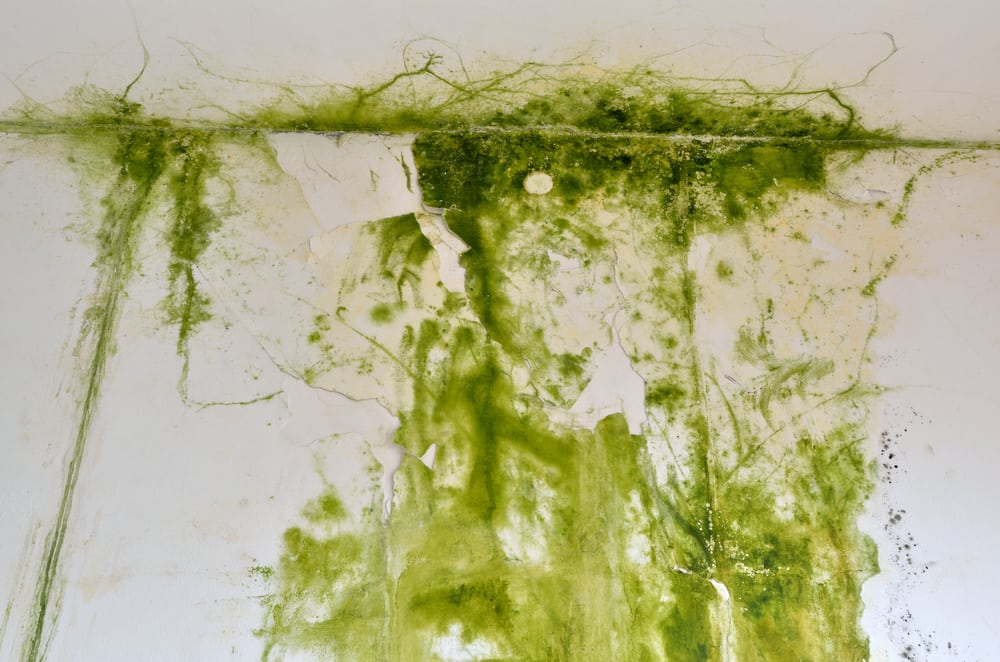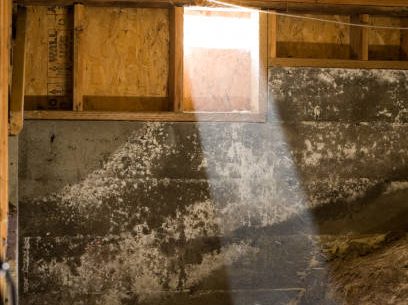Mold appears in various textures and colors, but all types share common characteristics—they thrive in moist environments, feed on organic matter, and can pose health risks. Green mold is no exception. It often develops in damp areas of homes, such as bathrooms, basements, and kitchens, where moisture levels are high. If you’ve recently noticed green mold, you might be wondering what it is and whether it’s dangerous. Understanding its growth, potential health effects, and proper removal methods is essential for maintaining a healthy home environment.
Table of Contents
What is green mold?
Green mold is a broad term used to describe various species of fungi that appear in different shades of green. It can look soft and fuzzy or have a powdery texture, depending on the species and surface it grows on. You’ve probably seen green mold on spoiled food like bread, fruits, and vegetables. However, it doesn’t just grow on food—it also thrives in damp areas of homes, such as bathrooms, basements, and attics. Green mold can spread quickly in moist environments, potentially causing damage and health issues.
Although many species of mold can grow green, the most common are Cladosporium, Aspergillus, and Penicillium.
- Cladosporium is a type of mold that appears olive green and is commonly found on plants. However, it can also thrive on various household surfaces, including walls, cabinets, carpets, and even HVAC systems. This mold tends to spread in damp or humid environments, making homes with poor ventilation more susceptible to its growth.
- Aspergillus is another type of mold that typically grows on spoiled food, such as bread and fruits. However, it can also thrive in nutrient-poor but moisture-rich areas like basements, bathrooms, and air conditioning units. Some species of Aspergillus produce mycotoxins, which can pose health risks.
- Penicillium is well-known for its antibacterial properties, as it was used to develop penicillin. This mold is usually bluish-green and thrives in cooler environments like soil, but it can also grow on damp household items such as upholstery, wallpaper, and wood. While some strains of Penicillium are beneficial, others can release mycotoxins that are harmful to both humans and pets. Proper moisture control and ventilation are key to preventing its growth in homes.
However, these molds can grow in other colors as well, such as blue or black. Thus, testing is the only way to find out which type of mold it is. That’s not to say that you should always test the mold in your home to determine whether it’s harmful.
Is green mold dangerous?
Contrary to popular belief, black mold is not the only harmful mold that can affect people and pets. While black mold is often considered more dangerous, green mold can be just as problematic and pose similar health risks. The truth is that all molds—whether green, black, white, or any other color—have the potential to cause health issues, particularly in individuals who are sensitive to mold exposure.
Continuous exposure to mold can negatively impact the respiratory system, leading to symptoms such as coughing, sneezing, throat irritation, and even triggering asthma attacks in those with pre-existing conditions. Mold spores can also cause allergic reactions, leading to discomfort and prolonged health concerns.
If you discover green mold in your home, it’s essential to address it immediately. Prompt removal and proper remediation are crucial to preventing further spread and ensuring a healthy living environment for you and your family.
This kind of fungus can grow anywhere in your home where a water problem has occurred. Check out how to prevent mold in the crawl space, basement, bathroom, laundry room, attic, as well as in houseplant soil, the HVAC system, closets, carpets, and washing machines.
For expert mold removal, contact the PuroClean remediation pros
If removing this type of fungus seems overwhelming, that’s because it can be a challenging task. Mold not only poses health risks, but improper removal can lead to an even larger infestation if not handled correctly. Many homeowners attempt DIY mold removal, only to find that the problem returns, often worse than before. The best way to ensure complete mold removal is to contact professionals such as PuroClean. Our team has the experience, specialized techniques, and advanced equipment necessary to remediate mold, thoroughly dry affected areas, and restore your property to a safe, healthy condition. Don’t take chances with mold—trust experts to eliminate it properly and prevent future growth, giving you peace of mind and a mold-free home.
What causes green mold to grow?
Green mold thrives in moist, warm environments with poor ventilation. Common causes include water leaks, high humidity, and organic materials like wood, drywall, or food.
Where is green mold commonly found?
It often grows on bread, fruits, cheese, damp walls, basements, bathrooms, and areas with water damage.
Is it dangerous to health?
Some green molds can produce mycotoxins that may trigger allergies, asthma, or respiratory infections. Prolonged exposure can be harmful, especially to those with weakened immune systems.
How can I identify it?
Green mold typically appears as fuzzy or powdery green patches. It may also have a musty odor. Lab testing is the only way to confirm the exact species.
Mold growth in your home is more than just an aesthetic concern – it’s an issue that demands immediate attention and proper action. While we’ve focused particularly on green mold in this article, it’s important to remember that all types of mold share similar growth requirements and potential health impacts. The strategies for prevention and removal remain consistent across different mold varieties.
The appearance of mold should always serve as a warning sign. Even small patches indicate excess moisture that could lead to more serious problems if ignored. More importantly, mold exposure can affect indoor air quality and potentially cause health issues ranging from allergic reactions to respiratory problems, especially for sensitive individuals. Green mold, like other types, can be particularly problematic when it grows in large quantities or when toxic species are present.
Effective mold control starts with moisture management. Simple preventive measures make all the difference: using bathroom exhaust fans, fixing leaks within 24-48 hours, maintaining indoor humidity below 50%, and ensuring proper ventilation throughout your home. Regular inspections of common problem areas – basements, bathrooms, around windows, and under sinks – help catch mold growth early when it’s easiest to address.
For small affected areas (under 10 square feet), careful cleaning with appropriate solutions while wearing proper protective equipment may be sufficient. However, remember that visible mold often represents just a portion of the actual growth. Surface cleaning without addressing the underlying moisture problem will likely lead to recurrence.
When dealing with persistent or widespread mold, professional remediation becomes essential. Certified mold specialists have the equipment and expertise to properly assess the full extent of contamination, safely remove affected materials, and implement solutions to prevent regrowth. They can also identify hidden moisture issues that might escape untrained observation.
Ultimately, prevention proves far more effective than remediation. By maintaining a dry, well-ventilated home and addressing water issues immediately, you can avoid most mold problems before they start. If you’re ever uncertain about the severity of an infestation or the safety of DIY removal methods, consulting with professionals ensures your home remains a healthy environment for you and your family. When it comes to mold – especially varieties like green mold that can indicate potential health risks – it’s always better to err on the side of caution.



